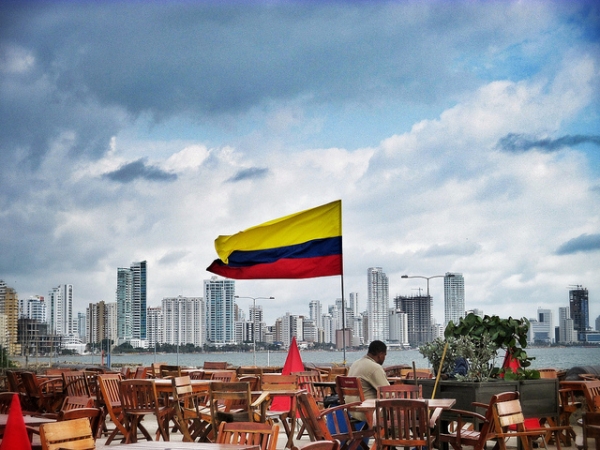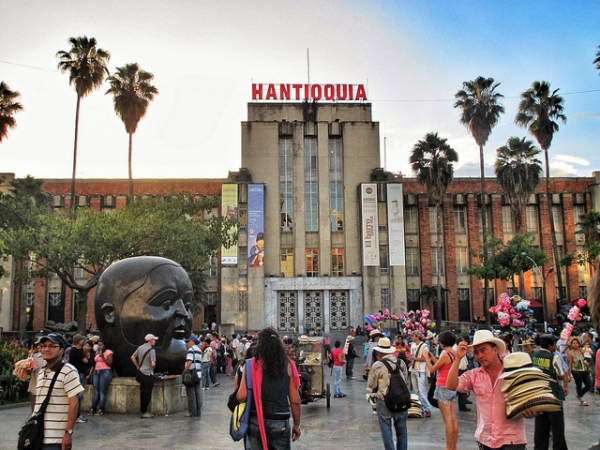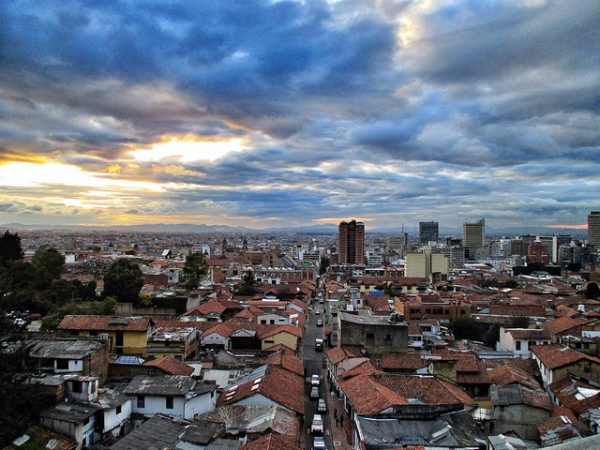Don't miss out on the best jobs!
Subscribe to HelpGoAbroad and weekly we will sent you an email with latest job posts. Provide your email address below
Overview of Colombia
Colombia has an unfair reputation. Although the gang activity, drugs and ‘la violencia’ (the violence) dissipated years ago, many tourists still leave Colombia off their travel list because they think it’s too dangerous. They couldn't be farther from the truth.
While travelling through South America for eighteen months, I found myself returning again and again to Colombia; for the people, the landscapes, the beaches, the food and the positive attitude that prevails over everything. If you’re travelling through South America and find yourself falling in love with Colombia like I did, consider taking Spanish lessons there. It’s a great way to give yourself a purpose while exploring the country, makes travelling in Spanish speaking countries a lot easier, and it really helps that Colombians absolutely adore talking to foreigners. I spent so much time improving my Spanish in Colombia that other South Americans thought I had a Colombian accent!
Colombia at a Glance
Domestic Population: 48.3 million
Capital City: Bogota
Language: Spanish
Currency: Colombian Peso
What’s Colombian Spanish Like?
Colombian Spanish is known to be quite musical and with a clear sound, making it interesting for foreigners to learn. Colombians use a lot of slang words, so depending where you study, you could easily pick up colloquialisms that are only applicable to that city or region of the country. It’s worth knowing that Spanish in Bogotá is much more conservative than in other parts of the country, Colombians are also very expressive with their actions, so prepare to be waving your hands and moving your head a lot!
Where to Study Spanish in Colombia
Most major cities in Colombia have language schools available where tourists can learn Spanish.
Bogotá: Colombia’s capital city is also the biggest, meaning there are numerous activities on offer to both keep you busy and give you different opportunities to practice your Spanish skills. It’s a cosmopolitan city with numerous art galleries, museums, interesting barrios (neighbourhoods) to explore, and a thriving nightlife and culinary scene. Weather wise, it can be quite cold and rainy: it’s the third highest capital in South America (after La Paz and Quito), so be careful of altitude sickness.
- Nueva Lengua Spanish School
- The Spanish World Institute
Medellin: set in a valley with a year-round ‘spring like’ climate, Colombia’s second biggest city is a fun loving place, and tourists adore it for that very reason. There’s a large expat community made up of retirees, travellers, teachers and volunteers, meaning it's easy to make new friends - if you're not trying to befriend Spanish speaking Colombians, of course.
- EAFIT University
- Medellin Language Academy
Cali: the dance capital of the country, Cali is well known for steamy salsa and packed out clubs. If you want to combine Spanish classes with some dancing practice, Cali is the place to come –and the hot weather definitely helps!
- Gringo Lingo
- Santiago de Cali University
Cartagena: the Caribbean coast is a tempting place to stop and while away a few weeks, and Cartagena is a perfect city to do this in. There are numerous islands a mere boat ride away, and plenty of opportunities to go snorkelling, diving, swimming and sunbathing.
- Nueva Lengua Spanish School
- Babel International Language Institute
Types of Spanish Study
First, decide whether you want to have private or group classes. Group classes are usually cheaper, but it can be harder to gauge your exact level in a group setting and you might find yourself either struggling to keep up or with work that’s much too easy. Private classes will be more intensive as it’s just you and a teacher, but you’ll progress a lot quicker than in a group setting.
Second, decide how seriously you want to take your Spanish. There are numerous ways to take Spanish classes in Colombia – anything from a casual hour of conversation practice with a hostel receptionist who also doubles as a teacher, to heading for the local university and enrolling in a proper course.
Third, how long will you be studying Spanish? Wanting a few days of classes means you’ll probably just be going over material you’ve already learned along the way; studying for two weeks or more means learning new tenses and grammar.
Housing Options in Colombia
All the cities mentioned above are part of the Colombia tourist trail, so it’s easy to find accommodation to suit you.
Homestay: many Spanish schools will suggest that you stay with a host family while studying Spanish, in order to get the most intensive Spanish practice possible. In these homestays, breakfast is usually included in a pre-arranged price, and some families will happily make you dinner each night too. Remember to tell your host mum when you’re coming home – and let her know if you won’t be back in time!
Apartment share: if you’re planning to stay longer than a week or two in the same city, think about either renting an apartment, or renting a room in a shared apartment. The latter can work out really well as you’ll have your own space as well as the opportunity to practice Spanish with your (hopefully Colombian!) housemates.
Hostel: many travellers opt to stay in a hostel while they’re studying Spanish. The social aspect of hostel living means you’ll always have people to talk to and hang out with, and as most hostel staff will be Colombians, you can chatter away with them in your steadily improving Spanish to your heart’s content!
Hotel: if you have the funds and need your own space, staying in a hotel is always an option, although it will mean you have to actively search out opportunities to practice your Spanish.
Cost of Spanish study in Colombia
Compared to other countries in South America, studying Spanish in Colombia isn’t exactly cheap. However, the accompanying Colombian lifestyle you’ll have more than makes up for the cost!
If you study for 4 hours a day for 2 weeks (ie 20 hours), you can expect to start by paying approx. $200 USD for a group class at any of the schools I’ve mentioned above. Private classes will cost more, although there may be discounts for studying longer than two weeks.
Many Spanish schools will also offer extra activities, like hiking, beach trips, rafting, dance classes, and cooking classes, for you to both practice your Spanish and meet other students. Occasionally these are included in the course price, but usually will cost extra.
Sign in to publish a comment



Be the first to comment on this post.